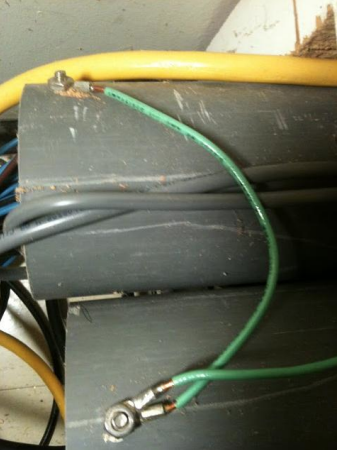Good Grounding is an Art
[May 2011] This is another in a series of pictures that gives us a chance to look and think. What do you see here?
Sometimes in the flurry of studio or transmitter site construction, we do more than necessary – adding an extra tie-wrap, screw, nail, hanger, nut, bolt, etc. – either to make sure something is mounted right and will stay mounted, to keep the weekenders from moving things around, or because there will be no opportunity to return and “clean things up a bit.”
Grounds
Installing the right number of grounds is always a concern, and should be planned and done carefully.
If someone fails to install insufficient ground leads, there is the likelihood that some piece of gear in the audio path will sit at a point above or below electrical ground, leading to hums, buzzes, or RF getting into the signal. And ungrounded gear always seems to attract a lightning stroke to kill electronics someplace in the plant.
Even a digital audio stream can be corrupted by a failure to properly ground a studio or transmitter site, causing dropouts – or worse.
On the other hand, too many grounds can cause ground loops with similar problems.
Thus, there is reason to install good, solid grounding, bonded to a single system ground point. The heavier the ground wire or strap – and the fewer the turns (in direction) – generally, the better the results will be.
What Do You See?
In the picture, what do you see? If we visited your site, would you do things this way?

Please feel free to offer your observations. After we give everyone a chance to take a look, we will post the answer to the question: What’s Wrong with This Picture?
Here is the answer and comments.
– – –
As always, we want to make it clear that our goal here is not to ridicule any engineer out in the field. Among the possible explanations for this situation could be an extended illness, broken gear, vacations, someone leaving abruptly during a project, or management unwilling to spend the money to do the job correctly.
The important part is to share what we can learn and implement at sites we control to facilitate better and cleaner operations.
